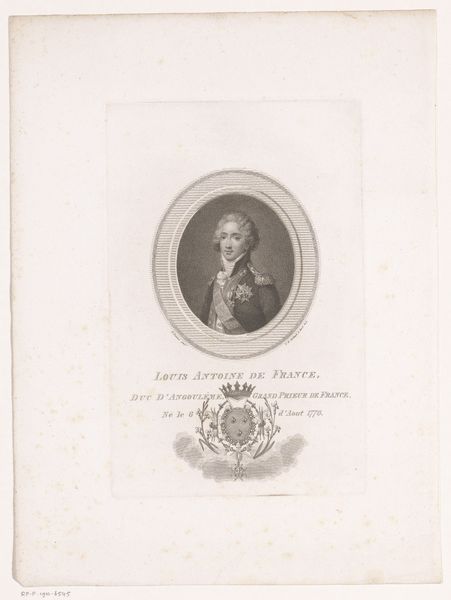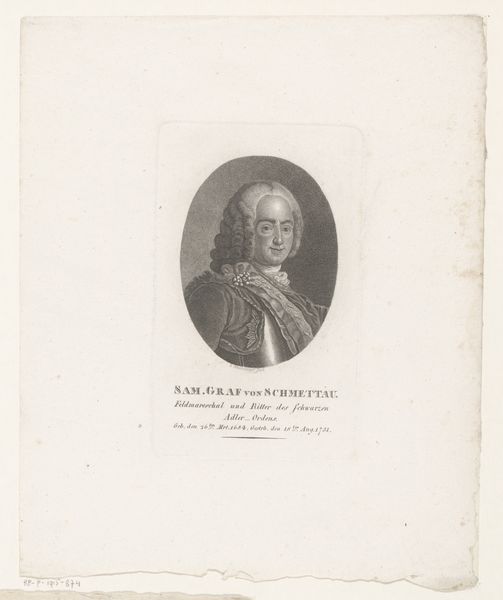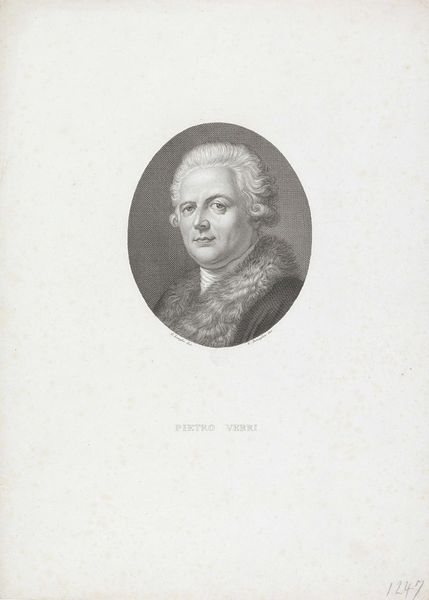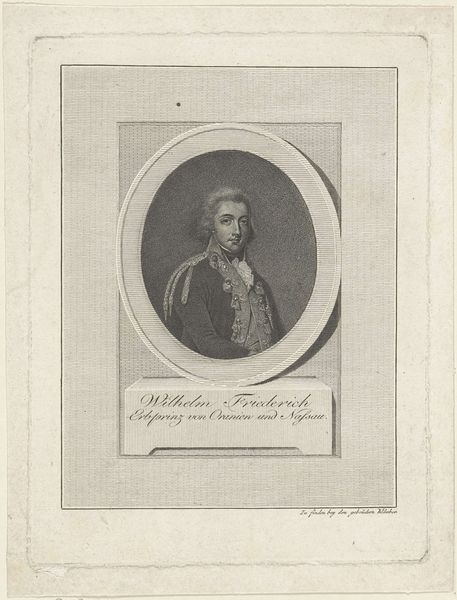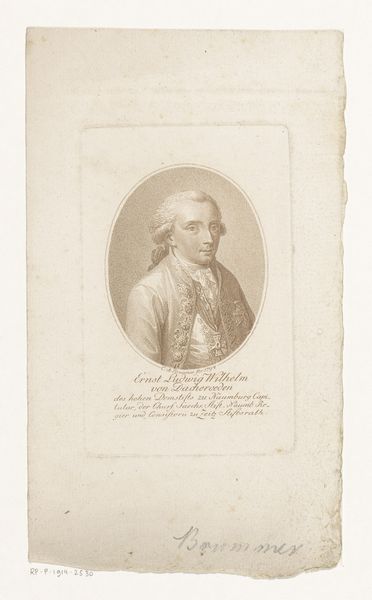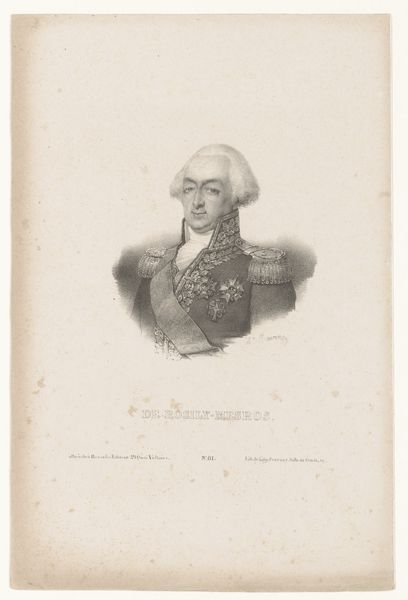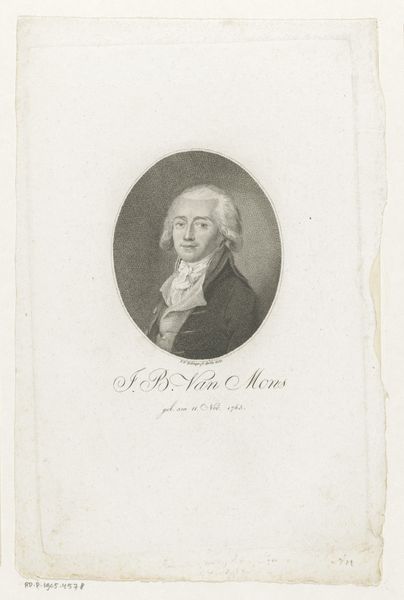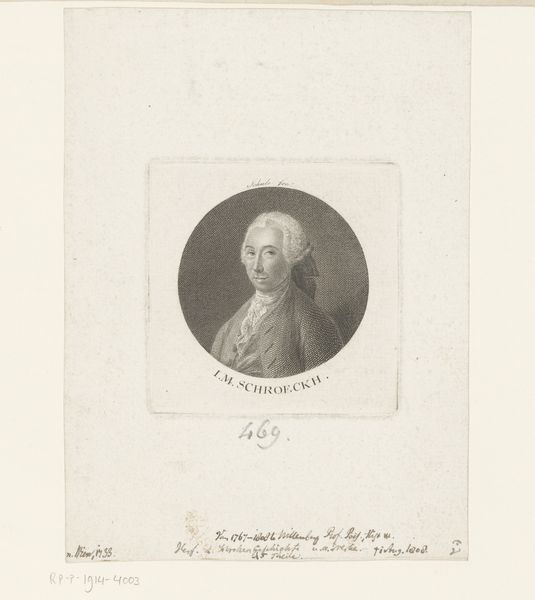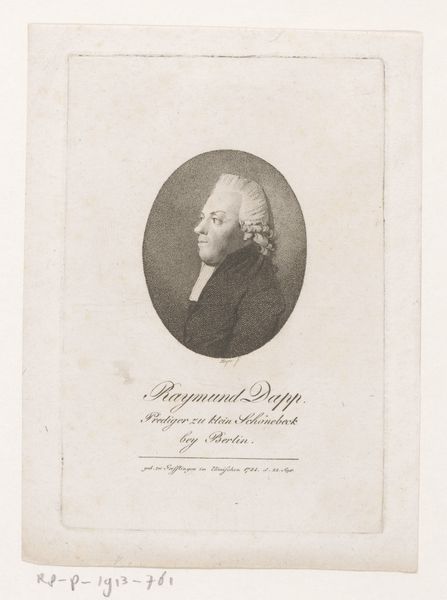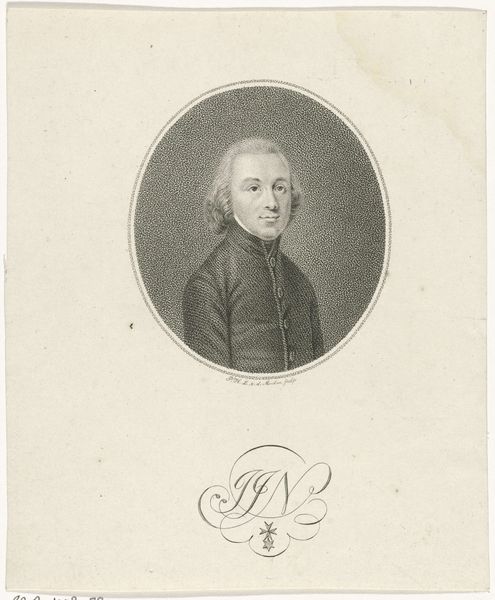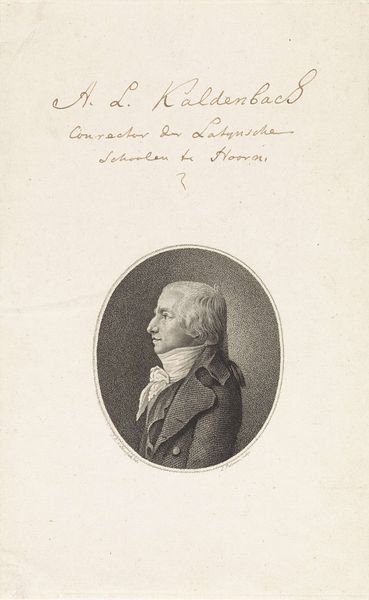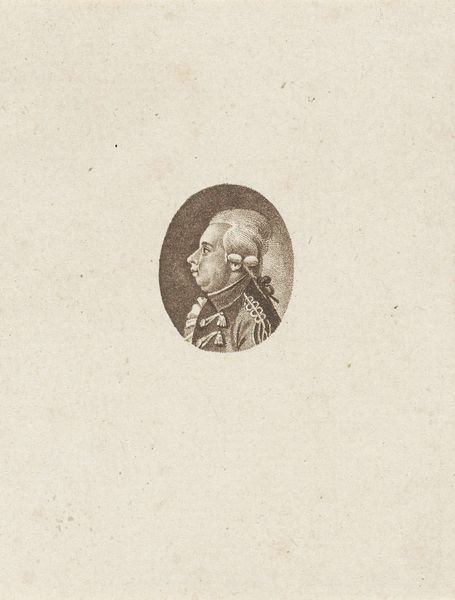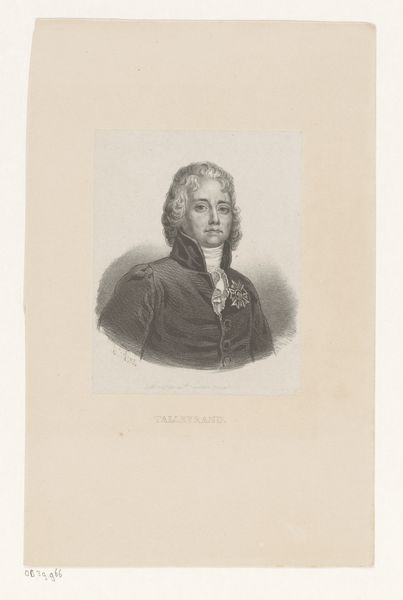
print, etching, engraving
portrait
neoclacissism
etching
old engraving style
history-painting
engraving
Dimensions: height 79 mm, width 62 mm
Copyright: Rijks Museum: Open Domain
Editor: Here we have a print from 1790 by Mathias de Sallieth, "Portret van Willem V, prins van Oranje-Nassau," housed here at the Rijksmuseum. It’s quite small and delicate. What story does this piece tell you? Curator: This portrait, beyond its likeness of Willem V, functions as a careful construction of power and legitimacy in a tumultuous period. It’s rendered as an engraving, a medium readily reproducible, implying wide distribution. Consider how images like these worked to cultivate a specific image of leadership, particularly during an era of growing Republican sentiment and just before the Batavian Revolution. Who was this image meant to convince? What anxieties about authority does it betray? Editor: That’s interesting, I didn’t think about it that way. It just looked like a standard portrait to me. You are making me think of audience and politics here. Curator: Precisely. Note the Neoclassical style – the controlled lines, the idealized presentation. This artistic choice isn't accidental. Neoclassicism was often employed to evoke associations with the Roman Republic, subtly linking the sitter to notions of civic virtue and enduring power, concepts always under negotiation during that period. Editor: So the artist isn't just showing Willem V, but actively trying to influence how people perceived him. It’s propaganda! Curator: It is certainly trying to convey certain ideas and values associated with Willem V. We might not frame it merely as ‘propaganda,’ though that's not entirely inaccurate, but rather as image-making within a complex political and social landscape. What does the choice of printmaking as a medium say about its intended audience and purpose? Editor: I suppose making a print means it could be spread more easily and cheaply than an oil painting that would be found in a castle or something. Curator: Exactly. Its availability to a broader segment of the population is key to understanding its public role. Editor: I never would have looked at this little print so deeply. I’ll definitely think more about the broader context of these images from now on. Curator: And that’s the value of considering art through the lens of history.
Comments
No comments
Be the first to comment and join the conversation on the ultimate creative platform.
